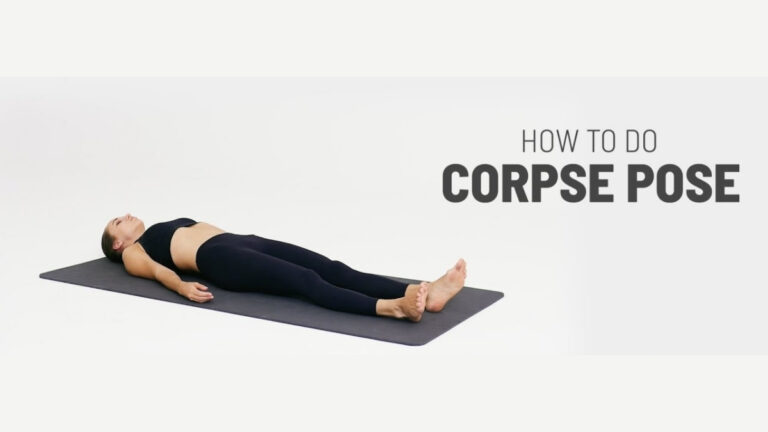98% of People Over 35 Are Ignoring This Doctor’s Fitness Advice—Don’t Be One of Them!

Your body is betraying you. Every morning you wake up stiffer than the day before. Your metabolism has slowed to a crawl. That stubborn belly fat refuses to budge despite your best efforts. Sound familiar? You’re not alone. A staggering 98% of people over 35 are making the same critical mistakes that accelerate aging and destroy their health.
Here’s what’s truly alarming: most fitness advice you’ve been following is actually working against your changing physiology. The strategies that worked in your twenties now sabotage your progress after 35. But there’s hope. Leading doctors have identified nine game changing principles that can reverse these trends and restore your vitality. The question is: will you be part of the smart 2% who take action?
1: Strength Training Becomes Non-Negotiable
After 35, your body begins losing 3-8% of muscle mass per decade, a process called sarcopenia. While cardio keeps your heart healthy, strength training becomes crucial for maintaining bone density, boosting metabolism, and preventing age-related muscle loss.

Research shows that resistance training increases growth hormone production and improves insulin sensitivity more effectively than cardio alone. Without adequate strength training, your resting metabolic rate drops significantly, making weight management increasingly difficult.
The muscle you build today determines your physical independence in your 60s and beyond. Strength training literally fights the aging process at a cellular level.
3 Key Tips:
- Start with compound movements like squats, deadlifts, and push-ups that work multiple muscle groups
- Aim for 2-3 strength sessions per week, focusing on progressive overload by gradually increasing weight or reps
- Include both heavy lifting (6-8 reps) and moderate weight training (12-15 reps) for optimal muscle development
2: Recovery Is Your Secret Weapon
Your body doesn’t get stronger during workouts—it gets stronger during recovery. After 35, your body requires 48-72 hours to fully repair muscle tissue, compared to 24-48 hours in your twenties.

Poor sleep quality directly impacts growth hormone production, which peaks during deep sleep and is essential for muscle repair and fat burning. Overtraining without adequate recovery leads to elevated cortisol levels, increased injury risk, and plateaued results. Quality sleep of 7-9 hours helps regulate leptin and ghrelin, hormones controlling hunger and satiety. Recovery isn’t laziness—it’s when the magic happens.
3 Key Tips:
- Schedule at least one full rest day between intense training sessions for the same muscle groups
- Prioritize 7-9 hours of quality sleep by maintaining consistent bedtime routines and limiting screen time before bed
- Include active recovery activities like gentle yoga, walking, or foam rolling on rest days
3: Mobility Work Prevents Tomorrow’s Pain
Mobility decreases by approximately 6 degrees per decade in major joints after age 30, leading to compensatory movement patterns that cause injury. Daily mobility work maintains synovial fluid production, keeping joints lubricated and reducing inflammation.
Poor mobility forces your body to recruit inappropriate muscles during movement, creating imbalances that manifest as chronic pain years later. Just 10-15 minutes of daily mobility work can prevent the need for physical therapy or surgery down the road. Flexibility isn’t just about touching your toes—it’s about maintaining pain-free movement in daily activities. Think of mobility work as insurance for your future self.
3 Key Tips:
- Perform dynamic warm-ups before workouts focusing on hip circles, arm swings, and leg swings
- Dedicate 10-15 minutes daily to static stretching, holding each stretch for 30-60 seconds
- Focus on problem areas like hip flexors, shoulders, and thoracic spine that commonly tighten from desk work
4: Protein Timing Matters More Than You Think
After 35, your body becomes less efficient at protein synthesis, requiring strategic timing to maximize muscle protein building. Consuming 20-30 grams of high-quality protein every 3-4 hours maintains positive nitrogen balance and prevents muscle breakdown. Research shows that eating protein within 2 hours post-workout optimizes the “anabolic window” for muscle repair and growth.

Skipping breakfast protein or having inadequate protein at dinner can lead to overnight muscle catabolism. Your body can only utilize about 25-30 grams of protein per meal for muscle building, making distribution throughout the day crucial. Evening protein intake is particularly important as it provides amino acids during the longest fasting period.
3 Key Tips:
- Include 20-30 grams of protein at each meal, emphasizing complete proteins like eggs, lean meats, or quinoa
- Consume a protein-rich snack within 2 hours after strength training to maximize muscle protein synthesis
- Have a casein protein source (Greek yogurt, cottage cheese) before bed to prevent overnight muscle breakdown
5: Stress Management Is a Fitness Strategy
Chronic stress is the silent killer of fitness progress after 35, triggering a cascade of hormonal disruptions that make fat loss nearly impossible. Elevated cortisol levels from persistent stress promote abdominal fat storage while simultaneously breaking down lean muscle tissue for energy.
Research shows that chronically stressed individuals can exercise religiously yet see minimal results due to cortisol’s interference with growth hormone and testosterone production. Stress also impairs insulin sensitivity, making your body more likely to store carbohydrates as fat rather than using them for energy.

The inflammatory response triggered by chronic stress accelerates aging at the cellular level and increases injury risk during workouts. Your nervous system remains in “fight or flight” mode, preventing the parasympathetic recovery state necessary for muscle growth and repair.
3 Key Tips:
- Practice 10-15 minutes of daily meditation or deep breathing exercises to activate your parasympathetic nervous system
- Schedule regular stress-relief activities like nature walks, reading, or hobbies that genuinely bring you joy
- Consider adaptogenic supplements like ashwagandha or rhodiola to help your body better manage stress responses
6: Consistency Beats Intensity Every Time
The fitness industry’s obsession with extreme workouts creates a dangerous all-or-nothing mentality that sabotages long-term success, especially after 35. Your body thrives on consistent, moderate stimulation rather than sporadic intense sessions followed by weeks of inactivity due to burnout or injury.
Research consistently shows that people who exercise moderately 4-5 times per week achieve better long-term results than those who do intense workouts 1-2 times per week. After 35, your recovery capacity decreases, making extreme workouts more likely to trigger overtraining syndrome, elevated cortisol, and increased injury risk.

The “weekend warrior” approach creates a stress response in your body similar to chronic illness, actually working against your fitness goals. Sustainable progress comes from creating exercise habits you can maintain for decades, not months. Your metabolism responds better to consistent daily movement than to occasional high-intensity sessions that leave you sedentary for days afterward.
Studies show that moderate exercise performed regularly increases mitochondrial density more effectively than sporadic intense training.
3 Key Tips:
- Aim for 30-45 minutes of moderate exercise 4-5 times per week rather than 2-3 intense sessions
- Focus on activities you genuinely enjoy to increase long-term adherence and reduce exercise as punishment mentality
- Track weekly consistency rather than daily performance—aim for 80% adherence to your planned workouts
7: Functional Fitness Over Vanity Metrics
Functional fitness training prepares your body for real-world movements and activities, becoming increasingly crucial as you age and want to maintain independence. While vanity metrics like bicep size or bench press numbers might boost ego, they don’t translate to carrying groceries, playing with grandchildren, or preventing falls.
Functional movements like squatting, lunging, pushing, pulling, and rotating mirror daily activities and create balanced strength throughout your entire kinetic chain. After 35, your focus should shift from how much you can lift to how well you can move, as movement quality directly impacts injury prevention and longevity.

Functional training improves proprioception, balance, and coordination—abilities that naturally decline with age but are essential for preventing falls and maintaining mobility.
3 Key Tips:
- Include compound movements like deadlifts, squats, and farmer’s walks that train multiple muscle groups simultaneously
- Practice single-limb exercises and unstable surface training to improve balance and proprioception
- Incorporate rotational movements and multi-planar exercises that mimic real-world activities like reaching, twisting, and carrying
8: Your Hormones Need Exercise Support
Hormonal changes after 35 significantly impact body composition, energy levels, and overall health, but strategic exercise can help optimize these crucial chemical messengers. Testosterone naturally declines by 1-2% per year after age 30 in men, while women experience fluctuating estrogen and progesterone levels leading to perimenopause.
Regular exercise improves sleep quality, which is essential for optimal hormone production as growth hormone and testosterone peak during deep sleep cycles. Resistance training increases DHEA production, a hormone that naturally declines with age but is essential for maintaining energy and muscle mass.
3 Key Tips:
- Prioritize heavy compound lifts 2-3 times per week to naturally boost testosterone and growth hormone production
- Include 1-2 HIIT sessions weekly but avoid excessive high-intensity training that can elevate cortisol chronically
- Monitor your energy levels and mood—if you’re constantly fatigued or irritable, reduce training intensity to support hormone recovery
9: Regular Body Composition Monitoring
The bathroom scale is one of the most misleading tools for tracking fitness progress after 35, as it fails to distinguish between muscle, fat, water, and bone weight. Body weight naturally fluctuates 2-5 pounds daily due to hydration status, sodium intake, hormonal cycles, and digestive contents, making daily weigh-ins emotionally destructive and scientifically meaningless.
Muscle tissue is 18% denser than fat tissue, meaning you can dramatically improve your physique while maintaining the same weight. Body composition analysis reveals the true story of your health transformation by measuring lean muscle mass, body fat percentage, and visceral fat levels. Visceral fat, the dangerous fat surrounding internal organs, is strongly linked to heart disease, diabetes, and metabolic dysfunction, yet it’s invisible on the scale.
Waist-to-hip ratio is a more accurate predictor of health risks than BMI or total body weight, with ratios above 0.9 for men and 0.85 for women indicating increased health risks.
3 Key Tips:
- Take monthly progress photos and body measurements (waist, hips, arms, thighs) instead of daily weigh-ins
- Invest in a body composition scale or periodic DEXA scans to track muscle mass and body fat percentage changes
- Focus on performance metrics like strength gains, energy levels, and how your clothes fit rather than scale fluctuations
General Tips:
1. Prioritize strength training 2-3 times per week to combat the 3-8% muscle loss that occurs each decade after 35.
2. Schedule mandatory rest days between intense workouts and aim for 7-9 hours of quality sleep for optimal recovery.
3. Spend 10-15 minutes daily on mobility work to prevent joint stiffness and future injury complications.
4. Eat 20-30 grams of protein every 3-4 hours throughout the day to maintain muscle mass and metabolism.
5. Treat stress management as seriously as your workout routine since chronic stress sabotages all fitness progress.
6. Choose moderate, consistent exercise 4-5 times per week over sporadic intense workouts that lead to burnout.
7. Train for real-life movements and daily activities rather than focusing solely on appearance-based goals.
8. Use heavy compound lifts and strategic HIIT sessions to naturally optimize declining hormone levels.
9. Track body composition, measurements, and performance metrics instead of relying on misleading scale weight.
Final Thought:
The harsh reality is that most people over 35 will continue ignoring these scientifically-backed strategies, watching their bodies deteriorate while wondering why their 20-something fitness approaches no longer work. Your body is sending you clear signals right now—decreased energy, slower recovery, stubborn weight gain, and nagging aches—but you still have the power to reverse these trends before they become permanent.
The difference between those who thrive in their 40s, 50s, and beyond versus those who resign themselves to decline comes down to implementing these nine principles starting today. Every day you delay is another day your muscle mass decreases, your metabolism slows, and your future self pays the price.
The choice is yours: join the 98% who ignore this advice and accept inevitable decline, or become part of the elite 2% who take control and build their strongest, healthiest body after 35. Your transformation doesn’t start on Monday—it starts with your very next decision.






